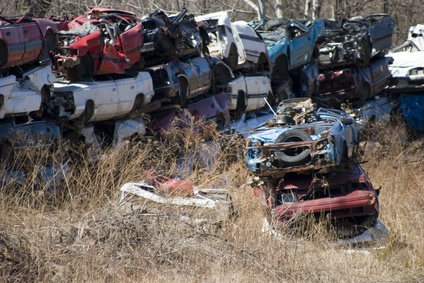
Many junkyards abound in partially wrecked, totaled and discarded cars, and will let customers come in and remove the parts they need. For the experienced parts hunter, a junkyard can seem like a treasure trove of deals. Many auto manufacturers have stopped producing parts for older models, making existing wrecks the only source for replacements. Bargain hunters might want to dig through wrecked vehicles to find a cheaper alternative than paying retail. Auto enthusiasts looking to rebuild or customize a hot rod might also find the components they need.
Compile a list of the parts you need to find. Make sure to write down the exact model or item number, measurements and model years (of your car's make) that can use the part you need. Also check the price of these parts in aftermarket or retail versions so that you can avoid overpaying at the junkyard.
Locate a junkyard near you that allows customers to come in and pick their own parts. Some junkyards do not have this policy, and instead remove parts, inventory them and then sell them at a fixed price through catalogs, the Internet or direct sales.
Call ahead. Many junkyards have computerized the inventory of their wrecked cars. You can save time by asking if they have a partially wrecked model of the car from which you need to harvest parts.
Take along the right tools for the job. For instance, if you're looking for a carburetor for a 1962 Chevy pickup truck, make sure to pack an adjustable wrench so that you can remove it. At a bare minimum, pack an adjustable wrench or ratchet set, a set of screwdrivers (including both Phillips head and regular head), needle-nose pliers and wire cutters.
Locate a wreck of the car in the junkyard that matches one of the make and model years that came equipped with the part/s you need.
Remove the part from the wreck. Follow the instructions in your car's repair manual.
Negotiate a price on the part/s, then pay for it.